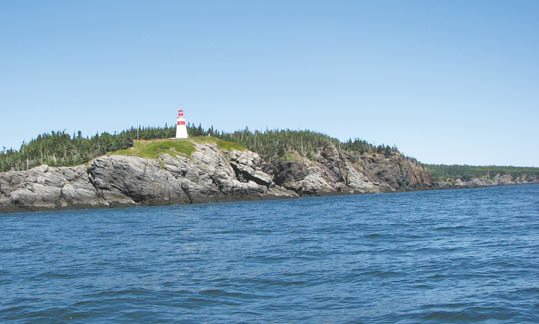Canadian Council of Fisheries and Aquaculture Ministers (CCFAM) Report on Canada’s Network of Marine Protected Areas, June 2017
Table of Contents
- Complete Text
- Executive Summary
- Introduction
- The Importance of Healthy Oceans
- Benefits of Marine Protected Areas and Marine Protected Area Networks
- Marine Protected Area Network Planning
- Progress in Priority Marine Bioregions
- Marine Conservation Targets: 2017 and 2020
- Other Effective Area-Based Conservation Measures (OEABCM)
- Conclusion
The Importance of Healthy Oceans
The world’s oceans occupy more than 70 percent of Earth’s surface and 95 percent of the biosphere. Oceans, including Canada’s three oceans, continue to face increasing pressures from climate change and human activities.
Canada’s full ocean estate, which goes beyond the Exclusive Economic Zone (EEZ) to encompass the extended continental shelf, covers a surface area of approximately 7.1 million square kilometres. This represents an area equivalent to about 70 percent of Canada’s land mass. Within the EEZ limit, Canada’s oceans cover a surface area of approximately 5.75 million square kilometres.
The ecosystem services provided by our oceans’ biodiversity are facing increasing impacts from climate change, species decline and loss, ecosystem degradation and loss, aquatic invasive species, and harmful effects from waste and other pollutants. These impacts affect the proper functioning of the ecosystem services and jeopardize the biodiversity of our oceans for present and future generations.
Healthy oceans provide ecosystem services
Healthy marine ecosystems support a range of benefits, including vital ecosystem services that provide food and water; regulate floods, drought, land degradation, and disease; and support for soil formation and nutrient cycling. Marine ecosystems also support cultural and recreational activities, as well as providing spiritual, religious, and other non-material benefits.Footnote 7
Our oceans are also essential to climate regulation – for example, through absorption of heat and greenhouse gases. Plankton produces much of the world’s oxygen. Estuaries are one of earth’s most productive ecosystems; they provide species with shelter from predators and stresses, but are highly impacted by human activity. Sponges filter nutrients from water. Protected coastal areas can help maintain the natural buffers needed to mitigate the impact on coastal lands from storm surges and floods as well as prevent erosion and stabilize shorelines. Our oceans provide the habitat needed to support species population growth and recovery, services that are particularly important for aquatic species at risk.
Healthy oceans are important for sustaining our economy
As the Organization for Economic Cooperation and Development notes: “the ocean is the new economic frontier. It holds the promise of immense resource wealth and great potential for boosting economic growth, employment and innovation. And it is increasingly recognized as indispensable for addressing many of the global challenges facing the planet in the decades to come, from world food security and climate change to the provision of energy, natural resources and improved medical care.”Footnote 8
However, with this potential comes the responsibility of ensuring that our marine resources are sustainably managed and marine ecosystems are conserved. Canada’s rich endowment of marine resources supports multiple maritime economic sectors from transportation to aquaculture and fisheries.
The establishment of MPAs and networks of MPAs is integral to managing sustainable and prosperous oceans. MPAs and MPA networks provide mechanisms for achieving overarching protection objectives through a series of linked management actions within an identified Canadian marine bioregion. For example, MPA networks may provide refugia for species or stock recovery and protection which in turn can support fishing sectors. Networks can be structured to support other industries (tourism) or activities (recreation) at bioregional and sub-regional levels. Many maritime sectors (for example, fisheries, aquaculture, transportation, energy) make important contributions to marine protection through sustainable use practices and technology improvements.
Healthy oceans shape Canada’s identity as a maritime nation
Healthy, productive oceans with abundant biodiversity at the genetic, species, and ecosystems levels are important to our shared cultural heritage and our Canadian identity as a maritime nation with three oceans. For Canada’s Indigenous Peoples, our oceans represent a continuous link to the cultural and spiritual practices of their ancestors and offer the promise of healthy communities for future generations.
Healthy oceans depend on strong international cooperation
Building strong partnerships worldwide with other governments, and international and non-governmental organizations (for example, the United Nations Convention on Biological Diversity (UN CBD) and the International Union for the Conservation of Nature (IUCN) creates and supports international platforms for information and knowledge exchange. These platforms enable Canada to learn from and work with like-minded countries and organizations to ensure that our oceans ecosystems remain healthy and vibrant.
Canada, as represented by the Government of Canada, is a party to the UN CBD and a member of the IUCN. We have developed domestic oceans objectives and approaches based on international agreements and resolutions arising from these fora.
In September 2015, the 193 member states of the United Nations adopted the 2030 Agenda for Sustainable Development and its 17 Sustainable Development Goals (commonly referred to as the “Global Goals”).Footnote 9 The Government of Canada is committed to supporting the implementation of these Global Goals.
- Date modified:

